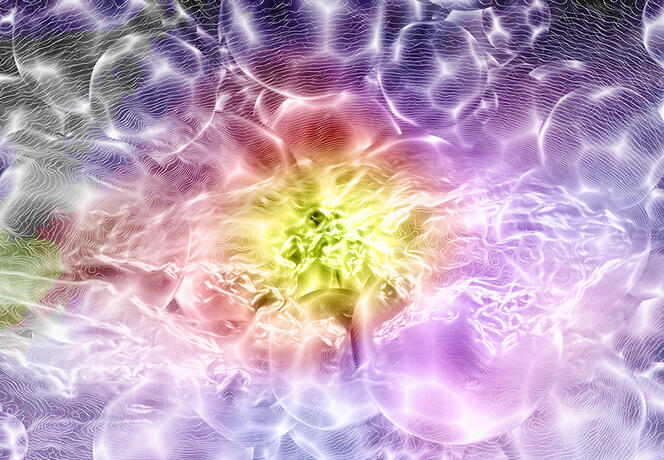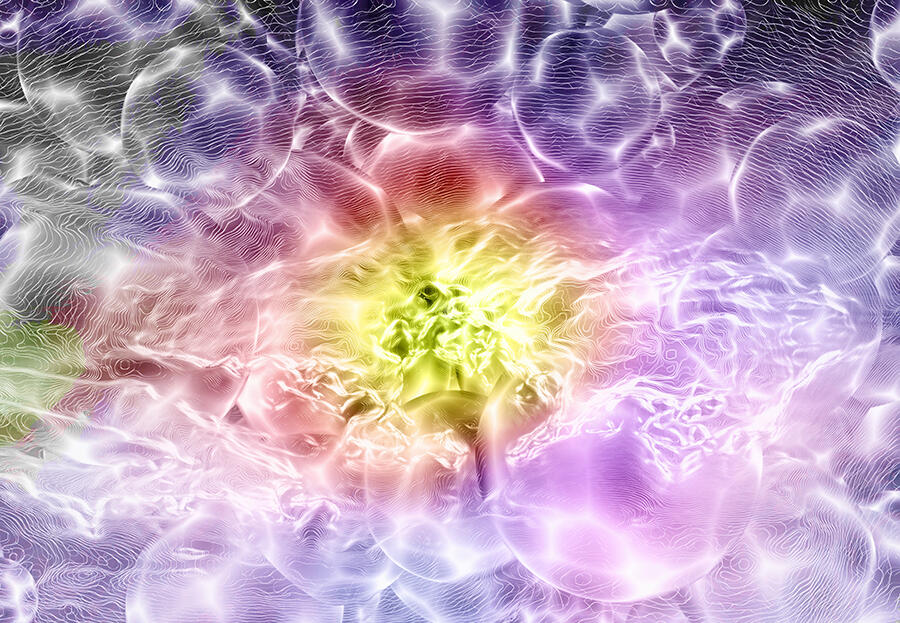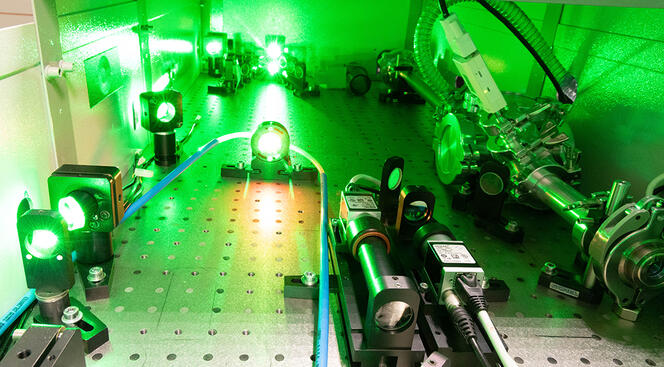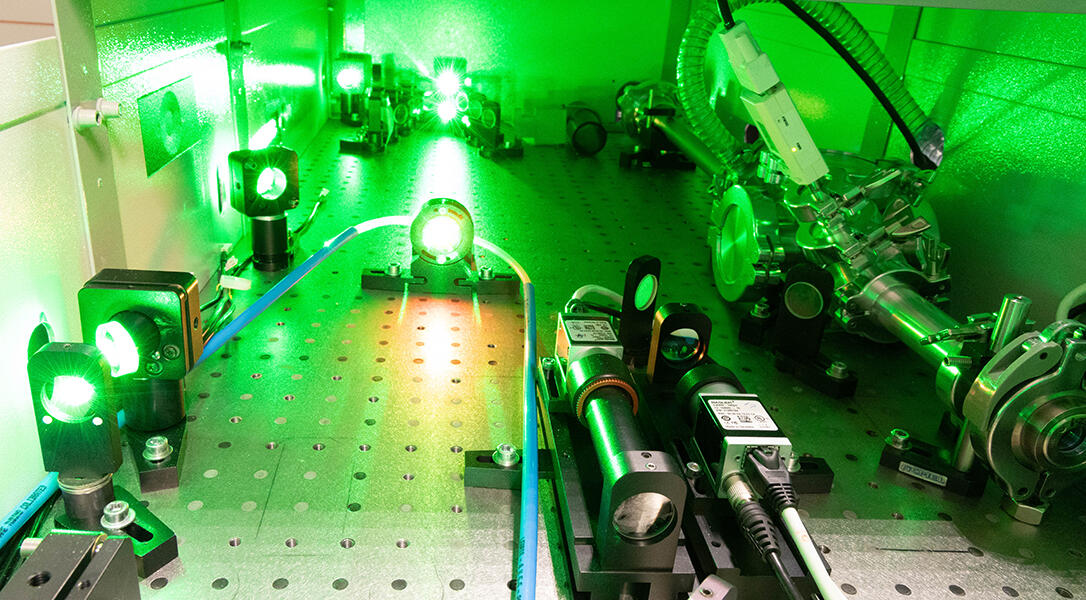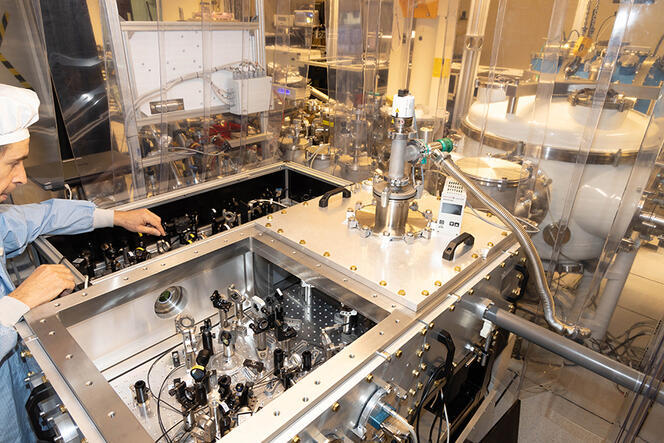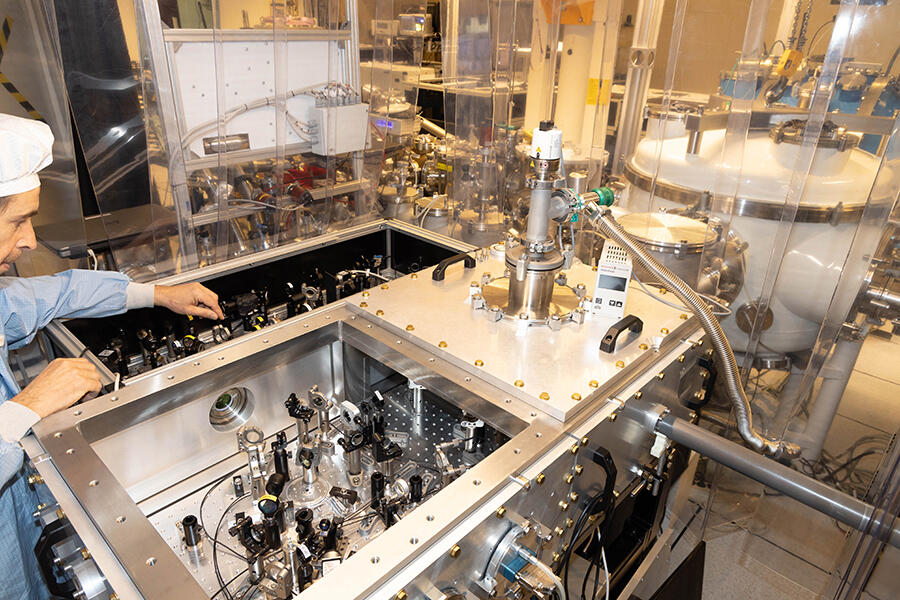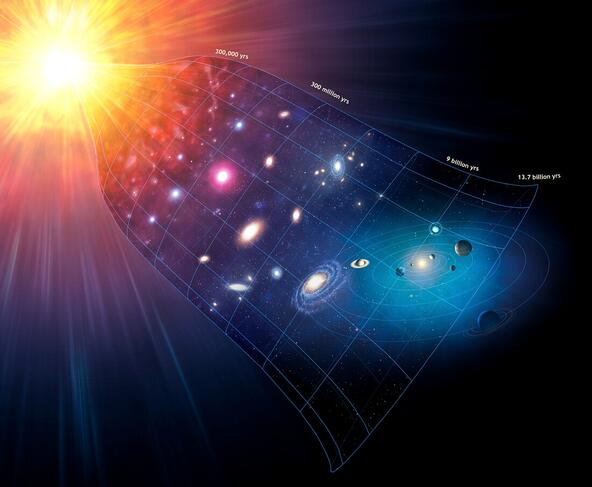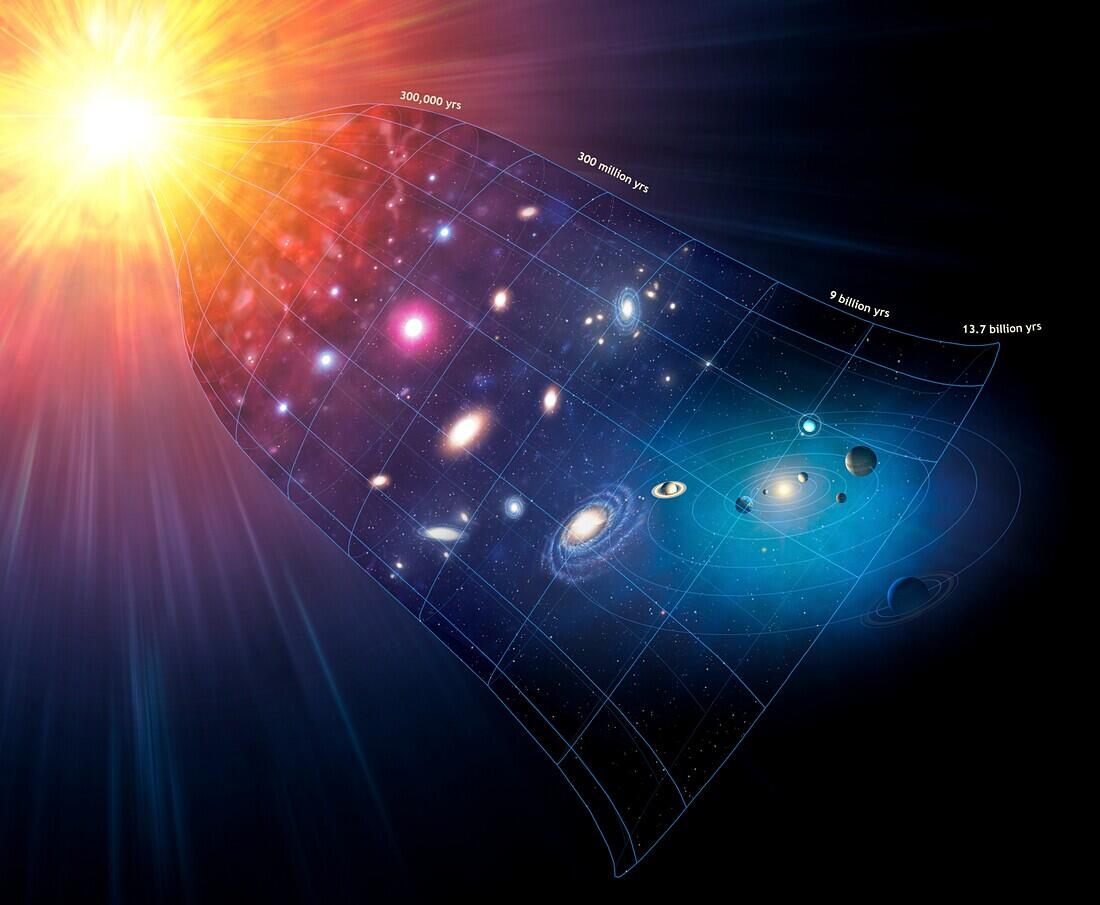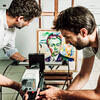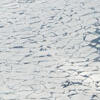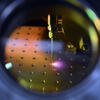You are here
Touching on vacuum energy
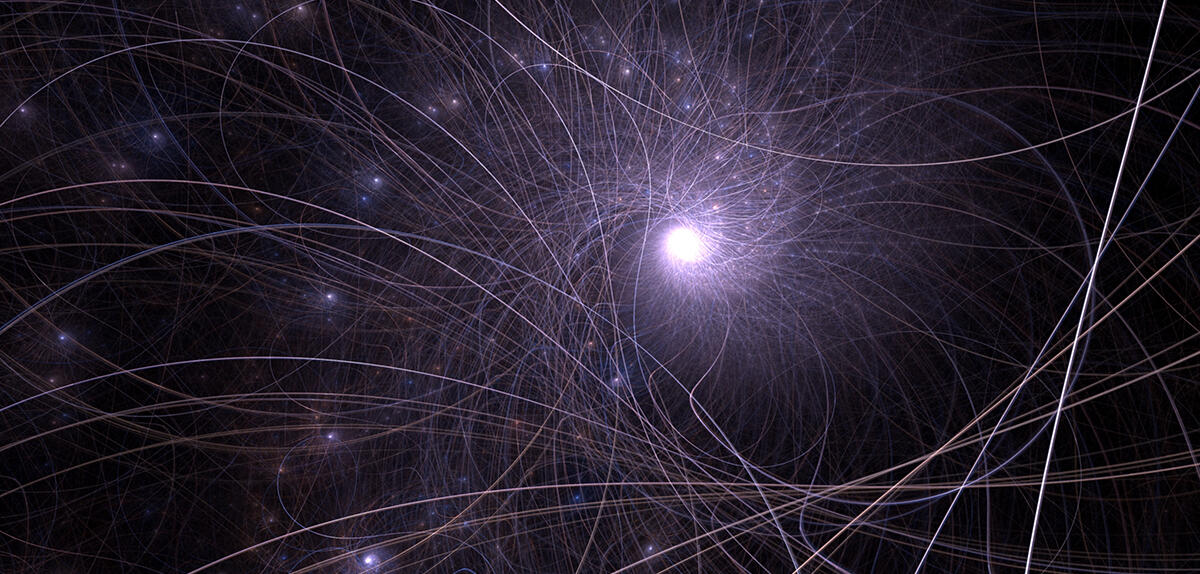
For the Greek philosopher Aristotle, Nature abhors a vacuum. More prosaically, you might say that a vacuum is what remains when everything has been removed, in other words, nothing. However, according to quantum mechanics, even when a cube of space has been emptied of all its material content, there is still something left, namely concentrated energy that, far from being nothing, has tangible effects. One of these, predicted by Werner Heisenberg, a pioneer of quantum theory, and his former doctoral student Hans Heinrich Euler, is that although light is supposed to travel in a straight line at light speed in a vacuum, it will be slowed down and deflected when the latter is subjected to a strong magnetic field.
Disconcerting though this prediction may be, a team of physicists led by Xavier Sarazin at the Laboratory of the Physics of the two Infinities - Irène Joliot-Curie (IJCLab)1, is currently working on the DeLLight experiment, with the aim of demonstrating this phenomenon. By revealing the bizarre nature of the quantum vacuum, the experiment should confirm the central importance of this “medium” in helping to make progress on all the fundamental questions that physics still struggles to explain.
A paradoxical energy
Even in the earliest versions of quantum mechanics at the beginning of the twentieth century, the equations of the new theory introduced mathematical terms that baffled physicists.
In 1916, Walther H. Nernst was the first to understand that they represented situations where, even in the absence of any radiation, fluctuations in the electromagnetic field that averages out to zero nonetheless persist in space. In the following decades, with the advent of quantum electrodynamics, physicists realised that even when space has been emptied of any substance, it seethes with so-called “virtual” particles that constantly pop in and out of existence, emerging from the recesses of space-time and then vanishing without trace. But however virtual these particles may be, they are nonetheless associated with an energy, called vacuum energy, whose effects are very real.
The truth is that, on a theoretical level, the situation is somewhat problematical, since calculations show that the energy of the vacuum is infinite. However, experimentally, the only thing that matters is the difference in energy between two configurations. So, in practice, what specialists are already calling the “vacuum catastrophe”2 can be swept under the carpet, simply by arbitrarily resetting the vacuum energy to zero.
Virtual particles with tangible effects
Thus, as early as the 1940s, calculations and experiments showed that the value of the magnetic moment of the electron is related to the sea of virtual particles in which atoms of matter are immersed. In 1948, on a more tangible level, Casimir showed that, in the cavity between two mirrors placed opposite each other in a perfect vacuum, only some fluctuations are allowed, just as a guitar vibrates only at certain frequencies. On the other hand, there is no such limitation outside the cavity. As a result, the mirrors are subject to a force that tends to push them closer to each other, which was confirmed in 1958.
However, the most astonishing phenomenon is undoubtedly the vacuum effect predicted by Heisenberg and Euler in 1936. In the presence of an extremely powerful magnetic field, it is as if the vacuum acquired a kind of materiality: when light travels through it, it slows down and its path is deflected, exactly as if it were passing through a lens. “In a way, it's rather as if the vacuum became denser when subjected to an intense magnetic field,” Sarazin explains.
In the language of physics, one would say that its optical index has changed. In a lens, this is caused by the presence of electric charges that are perfectly real, whereas in the case of a vacuum, it is the result of polarisation caused by a field of virtual particles.
A powerful laser to overcome residual noise
However, this effect is actually tiny. In the 1960s, the English physicist Reginald V. Jones attempted to detect it using a magnetic field of 1 tesla, but to no avail. “It was a beautiful experiment, but very much an exploratory one,” Sarazin says. Other experiments followed in its wake, but to date residual noise is still ten times stronger than the expected signal.
To make further progress, rather than working with continuous magnetic fields whose strength remains limited, Sarazin and his colleagues at DeLLight are planning to use the field produced by an extremely short, highly energetic light pulse. Specifically, by using the LASERIX facility to deliver pulses with a duration of 50 femtoseconds and an energy of 2 joules, focused on a volume of some ten microns to a side, calculations show that it is possible to generate a magnetic field of 105 teslas. If another pulse is then sent through the field at exactly the right moment, its path will be deflected as if it were passing through a tiny lens.
“Tiny” is actually an understatement: the expected deflection is 10-10 metres (the size of an atom) after travelling one kilometre, which would be impossible to measure. So, the experimenters had a second idea, which was to amplify the signal by getting a pulse that has been deflected to interfere with another that hasn't. This produces interference fringes whose characteristics are related to the original deflection. In this way, “the strength of the signal is increased by a factor of 250, which is enough to produce a deflection of a hundredth of a nanometre over a distance of a few tens of centimetres,” Sarazin explains. That's not much, but by repeating the experiment all day at a rate of ten pulses per second, estimates show that it should be possible to accumulate enough signal to be able to extract it from the experimental noise.
A superconducting vacuum?
At present, the trial is still in its preparatory stages. “Between 2019 and 2022, we produced the first prototypes of our interferometer, and after characterising all the experimental noise, the deflection we observed corresponded to what would be expected in air,” explains Sarazin. “We now have to set up our interferometer in a specially equipped room with the aim of further reducing vibrations, and improve the focus of the pulses.” The goal is to obtain the first data in vacuum by 2025.
According to Maxim Chernodub, at the Institut Denis Poisson3 in Orléans (northern central France), “concerning the magnetic moment of the electron, only indirect evidence of vacuum effects has been obtained, while in the case of the Casimir effect4 , the test requires the use of a material component, namely the reflecting plates. Whereas here only light and a vacuum are involved, which makes this experiment a very powerful one. If successful, it would bring us face to face with all the oddity of the quantum vacuum.” And in this instance, with the fact that, under certain conditions, a vacuum acquires properties that are normally those of matter.
Stranger still, around ten years ago Chernodub worked out that under the effect of a magnetic field of around 1020 teslas, the vacuum should behave like a superconducting solid, in other words a material that an electric current travels through without any resistance. “It's baffling,” he says. “For at the same time, a vacuum is by no means an ordinary object. In particular, in some ways it remains stationary when you travel through it, which causes the speed of light in it to be the same for every observer whatever their own speed, an observation that underpins Einstein's theory of relativity.”
The vacuum reflects our ignorance
This doesn't mean that the speed of light can't vary when two pulses of light moving in opposite directions interact, something that Sarazin hopes to demonstrate. “Our goal is to show the extent to which, as soon as we start to delve into the vacuum, we touch on the foundations as well as the limits of our understanding of the material Universe.”
Indeed, the fact that quantum theory posits that the value of vacuum energy is infinite, “shows that this conjecture is incomplete”, Chernodub points out. Actually, physicists have known for decades that quantum theory is incompatible with general relativity, which describes the large-scale evolution of the Universe. This problem took an unexpectedly dramatic turn in 1998, when two independent teams of astrophysicists demonstrated that the expansion of the Universe is accelerating. The reason for this is not known, although everything points to the vacuum itself as being the driving force behind this acceleration. Yet there is a snag: the experimental value of vacuum energy as inferred from astrophysical observations is at least 10115 times smaller than the theoretical value obtained within the framework of quantum theory, once it has become possible to partially resolve the “vacuum catastrophe”. It is as if the infinitely small on the one hand and the infinitely large on the other each referred to totally irreconcilable realities.
The vacuum thus tells us there is something in the material Universe that completely escapes us. About fifteen years ago, Álvaro de Rújula, at the CERN Department of Theoretical Physics in Geneva (Switzerland), said in jest that the vacuum catastrophe is so severe that “any physicist who doesn't spend at least an hour a day working on this problem should be locked up!” Meanwhile the IJCLab physicists working on the DeLLight experiment are set to explore one of the chinks in vacuum’s armour that may point to a way out of the conundrum. In any case, one thing is for sure: with all due respect to Aristotle, it cannot be asserted that Nature abhors a vacuum. Quite the opposite in fact!
- 1. CNRS / Université Paris-Saclay.
- 2. This huge discrepancy between the theoretical and experimental values of vacuum energy is known as the “cosmological constant problem”, or more informally as the “vacuum catastrophe”, and has been described as “the largest discrepancy between theory and experiment in all of science”.
- 3. CNRS / Université d’Orléans / Université de Tours.
- 4. The Casimir effect, as predicted by the Dutch physicist Hendrik Casimir in 1948, is an attractive force between two parallel uncharged conductive plates.
Explore more
Author
Born in 1974, Mathieu Grousson is a scientific journalist based in France. He graduated the journalism school ESJ Lille and holds a PhD in physics.


